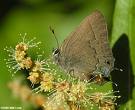Giant Chinquapin Tree Information
Images of Giant Chinquapin:






Giant Chinquapin grows in the following 3 states and provinces:
California, Oregon, WashingtonInformation about Giant Chinquapin:
The Chrysolepis Chrysophylla is commonly known as the Chinkapin, Chinquapin, Giant Chinkapin, Giant Chinquapin, Giant Evergreen Chinkapin, Giant Evergreen-chinkapin, Golden Chinkapin, Goldenleaf Chestnut as well as Western Chinkapin.
The currently accepted scientific name of giant chinquapin is Chrysolepis chrysophylla (Hook.) Hjelmqv. . Giant chinquapin is closely related to members of the chestnut genus (Castanea). It was formerly included within the genus Castanopsis , which includes the Asiatic evergreen trees and shrubs, but most authorities now place the two North American chinquapin species, C. chrysophylla and C. sempervirens (bush chinquapin), in the segregate genus Chrysolepis . Giant chinquapin develops a number of shrubby ecotypes which intergrade with treelike growth forms . Differences in form are currently thought to reflect site conditions rather than genetic differences . Consequently, the shrubby variety (var. minor), commonly known as golden or shrub chinquapin , is no longer recognized as a separate entity . The shrub Sierra chinquapin (C. sempervirens) hybridizes with shrubby ecotypes of C. chrysophylla in areas where their ranges overlap .Giant chinquapin is restricted to the Pacific Coast region, occurring from central California to west-central Washington . Giant chinquapin is most abundant in the coastal mountain ranges of northwestern California and southwestern Oregon. It is also common throughout most of western Oregon, extending eastward along the southern end of the Cascade Range into southeastern Oregon and as far north as the Columbia River gorge . Several disjunct populations occur in western Washington in the vicinity of Puget Sound . Giant chinquapin trees range primarily from San Francisco Bay northward . Shrubby ecotypes of giant chinquapin make up the entire southern portion of the species distribution from Marin County south to the Santa Lucia Mountains in Monterey County . Shrubby growth forms also occur throughout the range of the species in southern Oregon and northern California . Disjunct populations of both trees and shrubs grow locally on the west slope of the Sierra Nevada in central California .Self-perpetuating stands of giant chinquapin are indicative of climax conditions in a number of communities within redwood (Sequoia sempervirens), mixed evergreen, mixed conifer, white fir (Abies concolor), western hemlock (Tsuga heterophylla), and Shasta red fir (Abies magnifica var. shastensis) forests . Giant chinquapin may occur as either a subdominant tree or a dominant understory shrub, depending upon moisture conditions, elevation, and overstory density . In the absence of fire, giant chinquapin is the potential climax dominant at upper elevations of the mixed-evergreen zone in northwestern California . These communities are associated with mesic north slopes at the interface of the white fir zone and are currently dominated by Douglas-fir (Pseudotsuga menziesii) . Climax associates include Pacific rhododendron (Rhododendron macrophyllum), vine maple (Acer circinatum), beargrass (Xerophyllum tenax), and twinflower (Linnaea borealis). In the the western Cascades of Oregon, sites supporting the western hemlock/giant chinquapin habitat type are only slightly more mesic than those of the western hemlock-Douglas-fir/oceanspray (Holodiscus discolor) habitat type; the latter type occupies some of the hottest and driest forested sites in the western Cascades . Within this region, the presence of giant chinquapin often indicates infertile, droughty soils . Classification schemes listing giant chinquapin as a dominant component of the vegetation in habitat types (hts), community types (cts), or plant associations (pas) are presented below: Area Classification Authority OR, WA general veg. cts Franklin & Dyrness 1973 c OR general veg. pas Volland 1985 s OR: s.Chiloquin & Klamath general veg. pas Hopkins 1979 RD, Winema NF c OR: western Cascades forest hts, cts Hawk 1979 pas c OR: central Cascades forest pas, cts Dyrness, Franklin, & Moir 1974 n CA & sw OR: Siskiyou forest pas Atzet & Wheeler 1984 Mountain Province CA gen veg. cts Thorne 1976Some of the information provided here is attributed to:McMurray, Nancy E. 1989. Chrysolepis chrysophylla. In: Fire Effects Information System, [Online]. U.S. Department of Agriculture, Forest Service, Rocky Mountain Research Station, Fire Sciences Laboratory (Producer). , available at the USDA Fire Effects Information System (FEIS) website